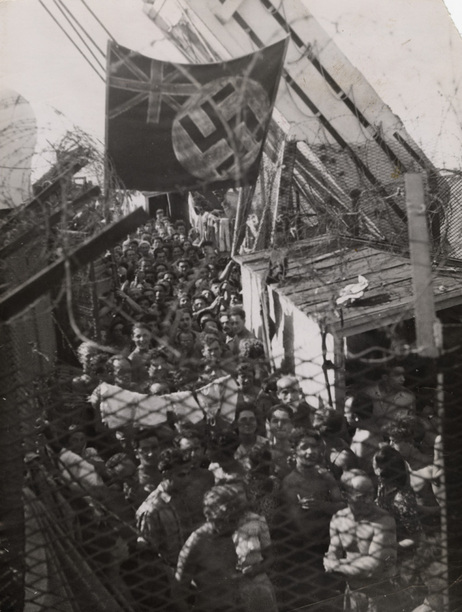A Woman Of Photos And Firsts, Ruth Gruber At 100
October 15, 2011 | Source: Monroe Gallery of Photography
Via NPR
At the age of 100, Ruth Gruber is responsible for a lot of firsts. When she was just 20, she became the youngest Ph.D. ever at the University of Cologne in Germany. She was the first photojournalist, much less female journalist, to travel to and cover both the Soviet Arctic and Siberian gulag. She documented Holocaust survivors and the plight of the ship, the Exodus 1947.

Photographer unknown/Courtesy of International Center of Photography
Ruth Gruber, Alaska, 1941-43
Born in Brooklyn in 1911 to Jewish immigrants, Gruber has been the subject of a documentary film; of a made-for-TV movie; a musical; and, earlier this summer, she received a Cornell Capa Award and exhibition at the International Center of Photography (ICP) in Manhattan.
It was as a correspondent in the Soviet Arctic in the mid-1930s that Gruber first started taking photographs — focusing on frontier life and the role of women. No one taught her, just as no one taught her to write. She had an ear and an eye.
"She was just a badass — no other way describe it," says Maya Benton, curator of the ICP exhibition. Gruber was already an established author and reporter when U.S. Secretary of the Interior Harold L. Ickes appointed her Field Representative to the Alaska Territory in 1941, where she made some of the earliest color images of the region.
It was in Alaska that she learned what she called to "live inside of time." In her New York City apartment she tells the story of once sending a cable to Anchorage, in need of a flight to Barrow:
"So I got a cable back from this company that had bush pilots: 'See you Tuesday, weather permitting.' Tuesday came, no pilot. Another Tuesday came, no pilot. I'd send another cable. No pilot. In New York, if the train was late, I was raring to go. What was the use getting upset in Alaska? So I decided I would just live inside of it like a golden bubble."

Andy Kropa/Getty Images
Ruth Gruber attends a tribute organized in her honor, in New York City in February, 2011.
It's a quality that Gruber claims is responsible for her ability to be patient — to see things that she might otherwise have missed in her urge to tell a story. That, and being a woman gave her an advantage in getting sources to reveal themselves.
In 1944, she spent two weeks on the Henry Gibbins, a ship of 1,000 Jewish refugees, many of them clad in striped concentration camp uniforms, on a voyage from Italy to America.
She recalls: "Some of the men said, 'We can't tell you what we went through, it's too obscene. You're a young woman!' I said, 'Forget I'm a woman, you are the first witnesses coming to America.' So they talked. Nobody refused to talk."
As she recounts in her memoir, she told the men and women that through them, America would "learn the truth of Hitler's crimes." But it was on another ship, three years later, that Gruber did some of her best-known work. The Tribune assigned Gruber to accompany the United Nations Special Committee on Palestine.
In Haifa, she saw the nearly-destroyed ship, Exodus 1947, and its 4,500 Holocaust survivors, who were forced to board three ships waiting to take them back to Germany. It was on the Runnymede Park that she took what is her most famous photograph: A Union Jack superimposed with a Swastika — and beneath it in the high contrast of a burning sun, hundreds of people squashed together. The image became Life magazine's photo of the week.

Ruth Gruber/International Center of Photography
1,500 Jewish refugees, having been forced off Exodus 1947 in Haifa, Palestine, wait aboard the British prison ship Runnymede Park. In protest, the prisoners painted a swastika on top of the Union Jack. August 22, 1947
In her doctoral dissertation on Virginia Woolf, the 20-year-old Gruber wrote that her subject "is determined to write as a woman. Through the eyes of her sex, she seeks to penetrate life and describe it." The same could be said of the woman who wrote that: 100-year-old Ruth Gruber.

